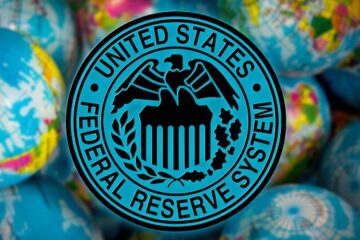It’s been a good time to own stocks. Actually, it’s been a really good time to own them.
The S&P 500 notched back-to-back years of 20% plus returns in 2023 and 2024, and most analysts target more upside in 2025.
Will that happen? Maybe. But it won’t be as easy as it was in 2023 and 2024. After all, the Wall Street rally was built on the back of a massive selloff caused by surging inflation and rising interest rates — a combo that made stocks relatively cheap.
💰💸 Don’t miss the move: Subscribe to TheStreet’s free daily newsletter💰💸
That’s no longer the case.
Stocks are pricey, and that’s got the attention of veteran hedge fund manager Doug Kass. Kass has spent over 40 years navigating good and bad stock markets, and while he’s not always right, he’s made some prescient stock market calls.
For example, in late 2022, when most were worried that stocks would fall, Kass turned bullish, predicting a big move higher. More recently, Kass warned in December that Nvidia could face a reckoning. So far, Nvidia’s stock price is down 10% from its peak in early January.
Related: Veteran fund manager unveils eye-popping S&P 500 forecast
Given Kass’s long record of managing money professionally, including as director of research for Leon Cooperman’s Omega Advisors, and his particularly accurate past predictions, investors should pay attention to what he’s saying about the S&P 500 now.
Long-time fund manager Doug Kass has some blunt words about challenges facing the S&P 500.
TheStreet
The S&P 500 faces an uphill slog
It’s true that the Federal Reserve’s decision to raise the Federal Funds Rate slowed inflation in 2023 and 2024.
In January, Consumer Price Index inflation was 3%. That’s miles better than the 8%-plus reading that shocked everybody in summer 2022.
Lower inflation has certainly been kind to stocks because it allowed the Federal Reserve to shift its policy from higher rates to interest rate cuts, which are good for corporate revenue and profit growth.
However, inflation progress has stalled, and while 3% isn’t terrible, it is higher than the 2.4% reported in September. The uptick in inflation has rattled everyone, including Fed Chairman Jerome Powell, who has hit the pause button on further interest rate cuts.
So, while we came into 2025 expecting multiple rate cuts, markets now think we’ll be lucky to see any cuts. And since hawkish monetary policy is a headwind to economic growth, investors have gotten a bit antsy.
It doesn’t help matters that one of the biggest drivers of stock market gains could also be about to hit stall speed.
Artificial intelligence spending surged after the launch of OpenAI’s ChatGPT in late 2022. Last year, the biggest cloud-storage and -service providers, known as hyperscalers, plowed huge sums of cash into buying servers and pricey high-performance computer chips, like Nvidia’s (NVDA) H200 and, more recently, Blackwell.
Related: Inflation report shocker upends Fed interest rate bets in 2025
Overall, capital expenditures at Microsoft (MSFT) , Amazon (AMZN) and Alphabet’s (GOOGL) alone reached $200 billion. Toss in big spenders like Tesla, Meta Platforms (Facebook et al.), Oracle, and others, and you’re talking even more money spent on the AI gold rush.
These companies plan to invest even more money in the technology this year to support large language models and new agentic AI programs.
But concern that we’re nearing the peak in spending is growing. Last month, China’s DeepSeek released a ChatGPT competitor that it says it developed for just $6 million (if you believe them). That’s raised questions over how much more money really needs to be spent.
IT budgets could also be slashed if the recent strength in the U.S. dollar persists. Technology companies in the S&P 500 get about 60% of their revenue overseas, so a strong U.S. dollar can crimp results when that foreign revenue is converted to dollars.
Oh, and of course, with borrowing rates stickier than expected, corporate number crunchers may revisit their assumptions about return on investment, shelving projects they might have implemented had rates continued to fall.
Wall Street veteran points out another big stock market headwind
Doug Kass’s career includes decades in money management and a long run as a hedge fund manager.
More 2025 stock market forecasts
Veteran trader who correctly picked Palantir as top stock in ‘24 reveals best stock for ‘255 quantum computing stocks investors are targeting in 2025Goldman Sachs picks top sectors to own in 2025Every major Wall Street analyst’s S&P 500 forecast for 2025
Recently, Kass has become concerned about a shift in how the stock market works. In days gone by, individuals called brokers, who called people at the exchanges to place buy and sell orders. In short, humans called the shots.
Nowadays, it’s become increasingly a world of machines.
Visit the New York Stock Exchange, and you’ll no longer see the likes of TheStreet Pro‘s Stephen Guilfoyle running about (his career kicked off on the NYSE floor back in 1987). Nowadays, you’ll find many of those booths filled by media outlets (including our own!) instead of specialists and floor brokers.
The NYSE accelerated its move to computers during Covid, and those changes have stuck. That’s only half of it, though. As computers have gotten more powerful and software has gotten smarter, more of the day-to-day picking and choosing of stocks has become algorithmic, triggered by slight pops and drops or any number of rules built into programs.
How to profit from the shift in market structure
In normal times, that’s not necessarily bad. But it can cause havoc when markets get squirrely. Little pops and drops can become much larger pops and drops simply because of these algorithmic triggers.
The upside? Volatility can be an opportunity if you keep a level head. So, while Kass worries over the rise of the machines in trading, he’s also ready to profit from it.
“The dominance of machines — in which momentum (in both ways) is accentuated by products and strategies that worship at the altar of momentum — is producing many more trading and investment opportunities,” said Kass recently in his diary on TheStreet Pro. “If one is bold and has a sense of a company’s ‘intrinsic value,’ one can capitalize (long AND short).”
Essentially, Kass thinks that algos can do stupid things because they’re not necessarily considering anything beyond the minute-to-minute trading frenzy.
Keep your head and understand the value of things, and market whipsaws can create chances to buy and sell stocks at better prices.
For many, though, that may be easier said than done. Wall Street is littered with stories of money lost because of emotion.
Too many embrace risk at the wrong time, and as the billionaire 5-hour Energy founder Manoj Bhargava recently pointed out, “risk is dumb.”
That fact isn’t lost on Kass.
[This] sort of opportunistic trading/investing requires one to be dispassionate,” said Kass. “It also means that ‘fighting’ the temporary and often short-lived price momentum in sectors and in individual stocks requires an ‘averaging in’ strategy.”
Fail to consider that point, and you may find yourself taking on a lot more risk and bigger losses than you bargained for.


